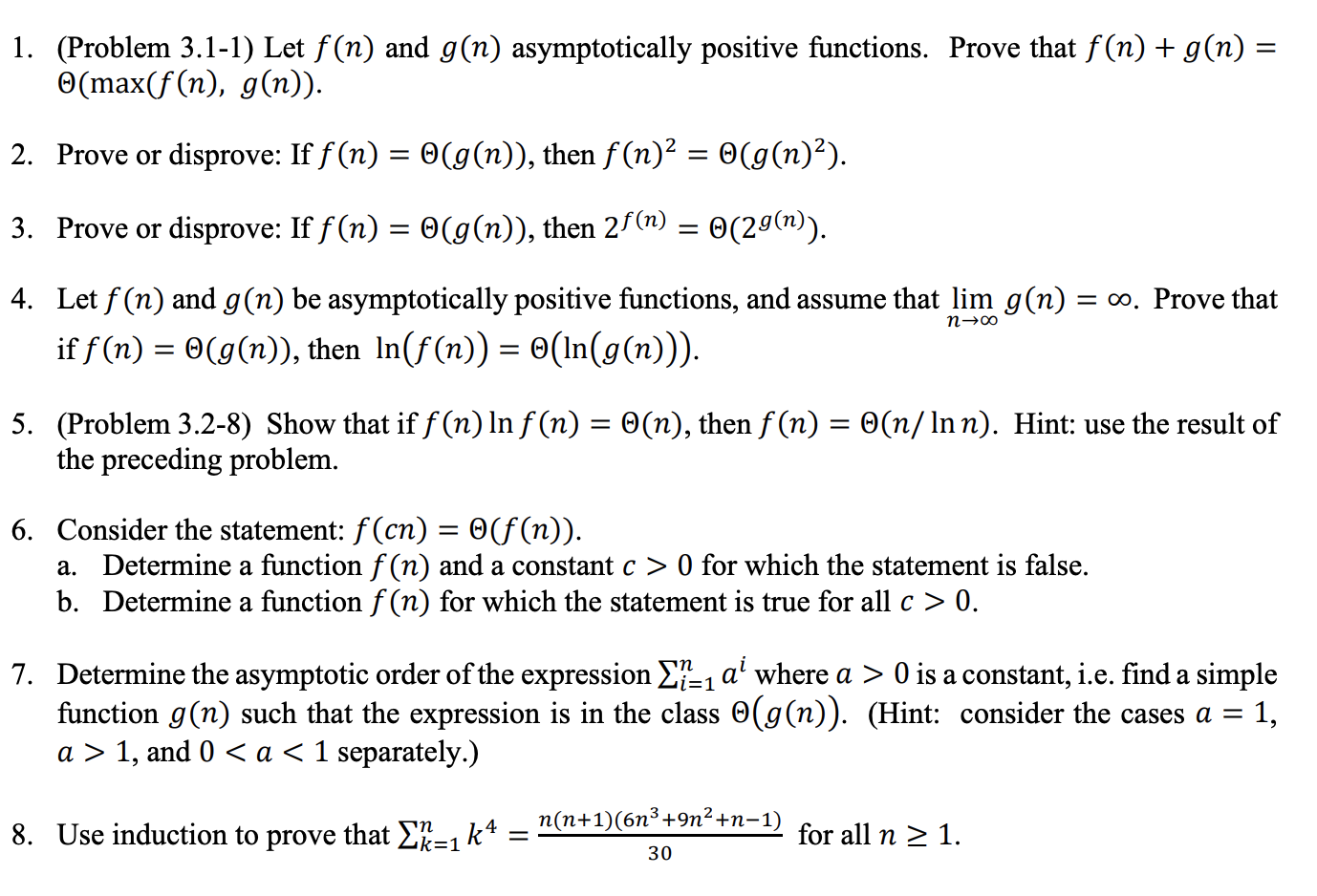Answered step by step
Verified Expert Solution
Question
1 Approved Answer
1. (Problem 3.1-1) Let f(n) and g(n) asymptotically positive functions. Prove that f(n) + g(n) = (max(f(n), g(n)). 2. Prove or disprove: If f(n) =

Step by Step Solution
There are 3 Steps involved in it
Step: 1

Get Instant Access to Expert-Tailored Solutions
See step-by-step solutions with expert insights and AI powered tools for academic success
Step: 2

Step: 3

Ace Your Homework with AI
Get the answers you need in no time with our AI-driven, step-by-step assistance
Get Started


